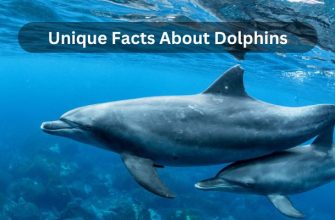Dolphins are among the most intelligent and social marine mammals. Their lives are a remarkable journey through various stages of growth and development, from birth to maturity. In this detailed guide, we will dive deep into the dolphins life cycle, exploring important facts, stages, and specific species like the bottlenose dolphin and the pink dolphin. Along the way, we will answer common questions like What is a dolphin’s life cycle? and discuss “what are the stages of a dolphins life cycle?” to provide a comprehensive understanding of how these fascinating creatures evolve.

Table of Contents
Understanding the Life Cycle of a Dolphin
The life cycle of a dolphin involves several key stages that are typical of mammals. From being born alive to aging gracefully in their ocean habitats, dolphins go through unique phases that reflect both biological and environmental factors.
Major Stages in the Dolphins Life Cycle:
- Birth and Calf Stage
- Juvenile Development
- Adulthood and Maturity
- Reproduction and Parenting
- Aging and Death
These stages can vary slightly depending on the species, particularly when comparing bottlenose and pink dolphins.
Stage 1: Birth and Calf Stage
Dolphins give birth to live young, usually tail-first, after a gestation period that ranges from 10 to 17 months. Calves are typically 3 to 4 feet in length at birth.
- Immediate Swimming: Calves must swim to the surface to breathe right after birth.
- Nursing: They nurse for up to 18 months, during which they build strength and learn from their mothers.
- Social Learning: This phase is essential for learning how to communicate and interact.

Stage 2: Juvenile Phase
After weaning, dolphins enter the juvenile stage, where they are more independent but still rely on their pod for safety and education.
- Learning Echolocation: Juveniles start to practice echolocation to locate food.
- Play and Socialization: They engage in playful activities that teach them coordination and social behavior.
- Growth: Dolphins grow rapidly during this time.
Stage 3: Adulthood and Maturity
Sexual maturity is reached between 5 to 12 years of age depending on the species and gender.
- Behavioral Maturity: Dolphins form strong social bonds and participate in complex interactions.
- Hierarchy: Males often compete for mating opportunities.
- Migration: Some species migrate in search of food or breeding grounds.
Stage 4: Reproduction and Parenting
Once mature, dolphins engage in mating through elaborate courtship behaviors.
- Internal Fertilization: Males mate with receptive females.
- Parental Roles: Only females care for the calf; males don’t participate in parenting.
- Breeding Interval: Typically every 2 to 5 years.
Stage 5: Aging and Death
As dolphins age, their physical abilities decline. However, older dolphins often play social roles within pods.
- Lifespan:
- Bottlenose dolphins: 40–60 years
- Pink dolphins: Around 30 years
- Natural Death: Predators, diseases, or old age contribute to mortality.

Bottlenose Dolphin Life Cycle
The bottlenose dolphin life cycle shares similarities with the general dolphin pattern but is marked by a few specifics:
- Gestation: Around 12 months
- Calf Care: Calves stay with mothers for 3–6 years
- Maturity: Sexual maturity by age 10–12
- Lifespan: Up to 60 years

Pink Dolphin Life Cycle
The pink dolphin, or Amazon river dolphin, has a distinct life cycle adapted to freshwater ecosystems.
- Birth: After 11 months gestation
- Maturity: Around 6–7 years
- Social Behavior: More solitary than marine dolphins
- Lifespan: Up to 30 years

What Are the Stages of a Dolphins Life Cycle?
Here is a simplified overview:
| Stage | Description |
| Birth & Calf | Dependent on mother; rapid development |
| Juvenile | Learning phase; increased independence |
| Adult | Reaches maturity and social integration |
| Reproductive | Breeding and parenting |
| Aging | Gradual decline and eventual death |
Interesting Dolphins Life Cycle Facts
- Dolphins sing to their unborn calves.
- Calves stay near their mothers for years.
- Juveniles practice “fish tossing” to learn hunting.
- Dolphin pods help protect mothers during birth.
- Social bonds can last a lifetime.
Final Thoughts
The dolphins life cycle is a captivating process that demonstrates the intelligence, adaptability, and resilience of these marine mammals. By understanding the specific stages and comparing species like bottlenose and pink dolphins, we gain deeper insight into marine biology and conservation.
Whether you are a marine life enthusiast, educator, or student, this comprehensive look at the life cycle of a dolphin helps appreciate the wonders of the ocean and the life it supports.
FAQs About the Dolphins Life Cycle
1. What is a dolphin’s life cycle?
A dolphin’s life cycle includes stages of birth, juvenile development, adulthood, reproduction, and aging. Each stage plays a vital role in their survival.
2. What is a dolphin’s life span?
Most dolphins live between 30 to 60 years. Bottlenose dolphins can live up to 60 years, while pink dolphins average about 30 years.
3. What is a bottlenose dolphins life cycle?
It includes a 12-month gestation, up to 6 years of maternal care, maturity at about 10 years, and a lifespan of up to 60 years.
4. What do dolphins look like in real life?
Dolphins have streamlined bodies, gray-blue skin, a dorsal fin, and a pronounced beak. Pink dolphins are pale with a pink hue.
5. What are the stages of a dolphin life cycle?
Birth, juvenile, adult, reproductive, and aging stages mark the complete life cycle of a dolphin.









